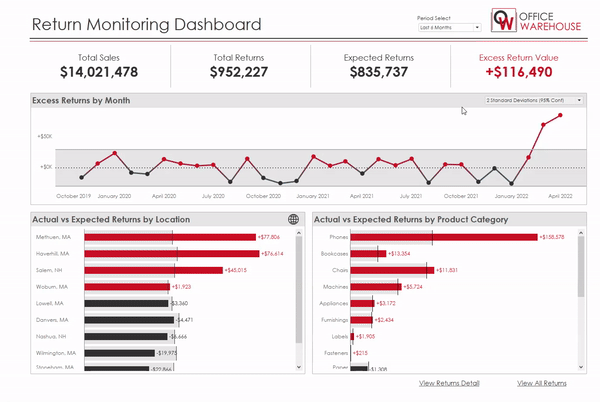Yesterday, Yahoo Finance published an article highlighting how "Organized retail crime" has driven $400 𝘮𝘪𝘭𝘭𝘪𝘰𝘯 in extra profit loss this year for Target, and is similarly affecting other major retailers.
The discount retailer told reporters on a call to discuss its third quarter earnings results that inventory shrinkage — or the disappearance of merchandise — has reduced its gross profit margin by $400 million so far in 2022 compared to 2021.
"At Target, year-to-date, incremental shortage has already reduced our gross margin by more than $400 million vs. last year," Target CFO Michael Fiddelke said on the earnings call, "and we expect it will reduce our gross margin by more than $600 million for the full year."
In a 2019 article, the National Retail Federation estimated "annual losses from merchandise return fraud are estimated at $18.4 billion, and fraud and abuse combined are estimated at $24 billion. With return fraud continuing to cause a challenge, retail loss prevention executives are constantly looking for new ways to battle this issue."
Return fraud, quite fittingly, refers to when shoppers try to deceive retailers via the product returns process. "Wardrobing," or returning clothing you've already warn, returning stolen merchandise, open/empty box fraud, and price switching are just a few examples of strategies often employed to defraud retailers.
While organized retail crime (ORC) is distinct from shoplifting for purely personal gain, the tactics employed can overlap. While gangs are unique in perpetrating smash and grab robberies, facility burglaries, and cargo theft, substantial ORC losses still occur frequently using the same shoplifting and scamming tactics as shoplifters - just at scale.
Finally, internal theft - or theft conducted or assisted by employees - is yet another variable retailers must account for in their risk mitigation strategy.
𝗛𝗼𝘄 𝗰𝗮𝗻 retailers 𝗮𝗱𝗱𝗿𝗲𝘀𝘀 𝘁𝗵𝗲𝘀𝗲 𝗴𝗿𝗼𝘄𝗶𝗻𝗴 𝗰𝗼𝗻𝗰𝗲𝗿𝗻𝘀?
While there has been legislative action to curtail the growing threat of organized retail theft (including the Organized Retail Crime Act of 2008, and the Combatting Organized Retail Crime Act of 2022) the onus remains on retailers to take proactive measures to mitigate their risk and protect their staff, customers, and brand.
One way return fraud can be proactively mitigated is by using historical data trends to predict return activity that clearly identifies activities that fall outside of those expected values. Actionable, real-time data provides managers with the insights needed to take corrective action to prevent additional losses and ensure employee compliance.
Inventory Analysts and Loss Prevention Professionals might consider a Return Fraud Monitoring Tableau Accelerator that is available for free on the Tableau Exchange.
It addresses key business questions such as:
What were the actual returns in a given period and how does that compare to the expected returns?
Are there excess returns, which could signify fraud, occurring in any single store location or group of locations?
Are excess returns more prevalent in certain products or groups of products?
What days and times of the week are returns most common?
Which associates are processing the most returns?
How much of the returns are confirmed invalid (open box fraud), or potentially invalid (returned without receipt)?
Returns can be complex if multiple systems are required to communicate in real time. Often, the retailer is relying on yesterday’s data to make today’s decision.
- Appriss Vice President of Marketing Tom Rittman

What are Tableau Accelerators?
Tableau Accelerators are ready-to-use dashboards and workbooks. They are meant to help you bring analytics to your line of business, vertical, or sector. Rather than starting with a blank canvas, you can now start with an expert-built dashboard to get data-driven insights faster.